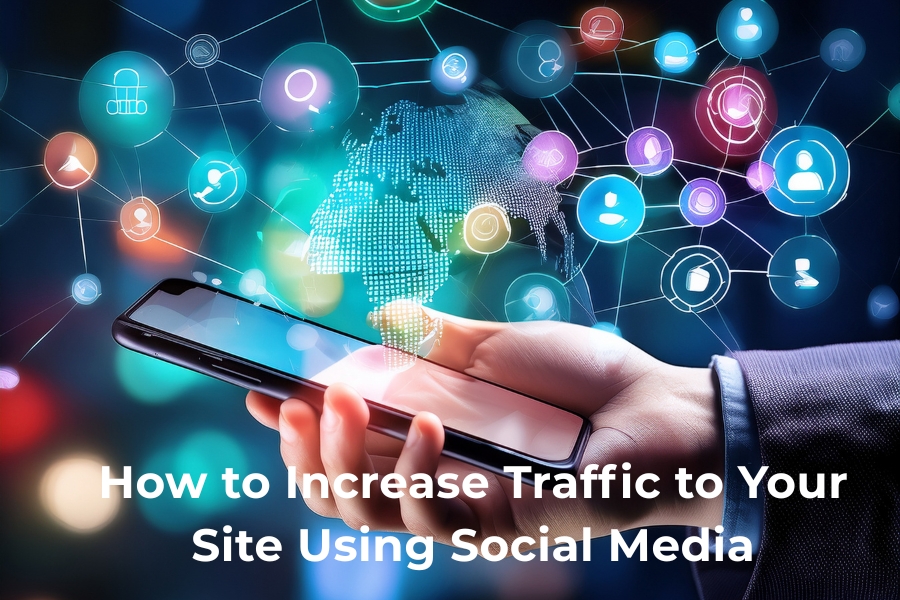How to Bring in Organic Traffic to Your Online Store

In today’s competitive online marketplace, simply launching an e-commerce store isn’t enough. To succeed, your store needs consistent and targeted traffic — and nothing is more valuable than organic traffic. Unlike paid ads, organic visitors find your site naturally, often through search engines, social media, or word-of-mouth. Not only is this traffic more sustainable in the long run, but it also tends to convert better because it’s driven by genuine interest. In this guide, we’ll explore the most effective strategies to help you generate organic traffic for your eCommerce Website (store), boost your visibility, and drive more sales — all without spending a fortune on advertising.
Organic Traffic to Your Online Store
Learn how to bring in organic traffic to your online store with effective strategies such as SEO, content marketing, social media, and email marketing.
Optimize Your Website for Search Engines (SEO)
Search Engine Optimization (SEO) is the cornerstone of organic traffic. When your website ranks higher on Google, you naturally attract more visitors. Here’s how to improve your SEO:
-
Keyword Research: Use tools like Google Keyword Planner, Ahrefs, or Ubersuggest to find relevant keywords your audience is searching for.
-
Optimize Product Pages: Each product should have a unique, keyword-rich title and meta description. Use alt text for product images and optimize URLs.
-
Create SEO-Friendly Content: Regularly post blogs, buying guides, or how-tos related to your products.
-
Improve Site Speed: A fast-loading site improves user experience and boosts rankings. Use tools like Google PageSpeed.
Start a Blog and Create Valuable Content
One of the best ways to get organic traffic is through a blog. When you publish helpful and relevant content regularly, search engines take notice.
-
Answer Common Questions: Write blog posts around frequently asked questions in your niche.
-
Product Tutorials and Guides: Create how-to content that showcases your products.
-
Industry News and Trends: Stay relevant by discussing current events or innovations in your industry.
-
Include Internal Links: Link blog posts to relevant product or category pages to guide users through your site.
In addition to boosting traffic, content marketing gives your business credibility and trust.
Leverage Social Media Organically
While social media is often associated with paid promotions, it can also be a powerful organic traffic driver.
-
Post Consistently: Share engaging content such as product tips, user-generated content, behind-the-scenes videos, and lifestyle images.
-
Use Hashtags: Include trending and niche-specific hashtags to increase reach.
-
Engage with Your Community: Reply to comments, join discussions, and collaborate with influencers or micro-creators in your niche.
-
Add Product Links to Bios: Make it easy for followers to click through to your store.
Platforms like Instagram, Pinterest, and Facebook are especially useful for visual e-commerce brands.
Utilize User-Generated Content (UGC)
UGC includes product reviews, testimonials, photos, and videos shared by your customers. Not only does this build social proof, but it also drives organic engagement and traffic.
-
Encourage Reviews: After purchase, request customers to leave a review or share their experience.
-
Create a Branded Hashtag: Motivate users to tag your brand when posting on social media.
-
Feature UGC on Your Website: Showcase user photos and testimonials on product pages or your homepage.
This approach boosts credibility and improves SEO by adding fresh content.
Build Backlinks to Your Store
Links from other websites to yours, or backlinks, tell Google that your website is reliable and pertinent.
-
Guest Blogging: Write valuable content for other industry-related blogs with a link back to your site.
-
Influencer Outreach: Partner with bloggers or influencers who can review your products and link to your store.
-
Submit to Directories: Add your e-commerce site to high-quality business directories.
The more high-authority backlinks you have, the better your search engine rankings — and organic traffic — will be.
Optimize for Mobile Devices
More than half of all e-commerce traffic comes from mobile users. If your website isn’t mobile-friendly, you could be losing valuable visitors.
-
Responsive Design: Ensure your site adapts to all screen sizes.
-
Easy Navigation: Simplify your menu and product filtering for mobile users.
-
Fast Loading Times: Compress images and reduce code to speed up your mobile site.
Google prioritizes mobile-first indexing, so optimizing for mobile is essential for both user experience and search rankings.
Use Email Marketing to Boost Organic Return Visits
While not organic in the traditional SEO sense, email marketing encourages repeat traffic without paid ads.
-
Capture Emails with Popups or Offers: Provide discounts or lead magnets to encourage signups.
-
Send Value-Driven Newsletters: Share blog updates, product launches, and promotions to keep users coming back.
-
Segment Your Audience: Personalize emails based on browsing or purchase history.
Email helps turn one-time visitors into loyal customers and consistent traffic sources.
Conclusion
Generating organic traffic for your e-commerce store is a marathon, not a sprint. It requires consistent effort, strategic planning, and ongoing optimization. By focusing on SEO, content creation, social media marketing, and building authority through backlinks and reviews, you can steadily grow your traffic — and your revenue.
Remember, the key is to deliver real value to your visitors. When your content and products genuinely help solve problems or fulfill needs, organic growth will follow naturally.





